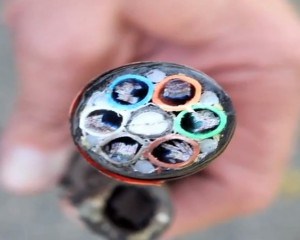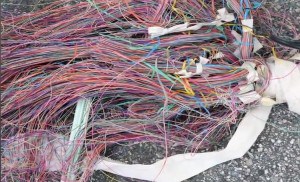 Maitreyi Krishnaswamy, Verizon’s head of FiOS TV admits she practically never watches live television — she records everything on her DVR first.
Maitreyi Krishnaswamy, Verizon’s head of FiOS TV admits she practically never watches live television — she records everything on her DVR first.
Krishnaswamy has been responsible for many of the interactive video services offered on Verizon’s FiOS TV platform, including on-screen apps, the media program guide, and how customers connect various devices to the FiOS television experience.
Now she’s directing Verizon’s consumer video services — deciding which channels make the lineup on FiOS TV and the networks available for streaming to mobile devices.
Krishnaswamy told the Tampa Tribune she recognizes the way Americans watch television has changed over the past few years, and she admits it has led to the “growing” trend of customers’ cord-cutting their cable TV subscriptions in favor of online viewing.
“The question is: Is it growing enough for us? For us, it’s a matter of cord-cutters versus cord-shavers — people who switch to smaller tiers,” Krishnaswamy said. “Is the migration to a-la-carte enough that we can go that route? It has a way more important impact that just on them. It impacts how we negotiate TV contracts with studios. It’s not something we can do overnight, but definitely something we’ve been looking at.”
Verizon has made it clear it intends to compete for customers regardless of how they watch television, but Krishnaswamy signals the company is also considering protecting their core video business model, and would only say Verizon had no announcements to make “just as yet” regarding an Internet Overcharging scheme including usage caps and overlimit fees. Critics of data caps argue that limiting broadband usage prevents customers from taking their viewing experience online because it threatens consuming the majority of their monthly data use allowance.
But Verizon does not mind offering customers a TV Everywhere experience — streaming video content over its broadband network, so long as a customer also subscribes to its TV package. The company already offers live streaming television of many channels on its lineup and wants to bolster that with on demand content. Verizon also is experimenting with non-traditional set top boxes, and although Krishnaswamy had nothing to say about supporting the forthcoming Apple TV, she is actively working on improving how Verizon’s television service works away from the traditional company-provided set top box.
Some highlights:
- Verizon’s partnership with Redbox will let the company offer a new streaming and DVD rental service for customers, regardless of whether they live in a Verizon FiOS area or not. Customers will be able to access the service over mobile broadband, Wi-Fi, or any home broadband connection;
 Verizon will introduce an online viewing app for forthcoming versions of Amazon’s Kindle;
Verizon will introduce an online viewing app for forthcoming versions of Amazon’s Kindle;- The company has thus far only managed to secure streaming rights for in-home viewing and has run into difficulty getting content providers to let customers watch shows while on the go;
- Google Fiber is “interesting,” but Krishnaswamy doesn’t believe they are “a real operator” when only offering service in one city. She thinks the project is a good idea, however, because it forces competing providers “to increase your speed;”
- Verizon is considering simplifying its family of apps to reduce customer confusion. They currently have different apps for home security, home media, the remote control, and the program guide. Verizon wants its MyFiOS app to become a “super-app” that manages everything.
[flv width=”640″ height=”500″]http://www.phillipdampier.com/video/TVnext Interview – Maitreyi Krishnaswamy Verizon FIOS 1-28-11.m4v[/flv]
Back in 2011, Maitreyi Krishnaswamy explained her thinking about where Verizon FiOS was taking the TV experience. Many of these applications have since been released, but Verizon — like most providers — still runs into brick walls with content providers getting licensing to allow more flexible viewing of content. (12 minutes)


 Subscribe
Subscribe







